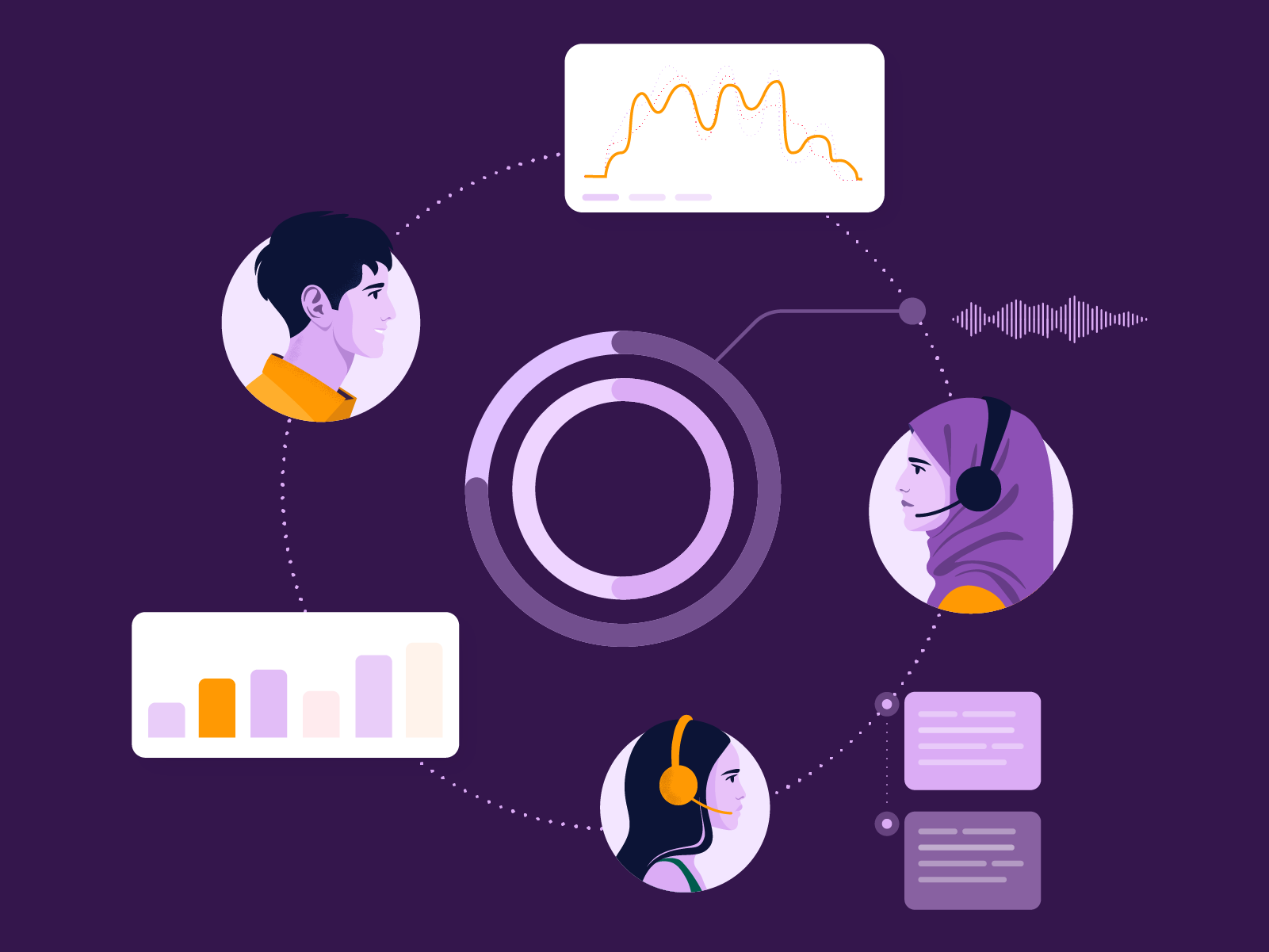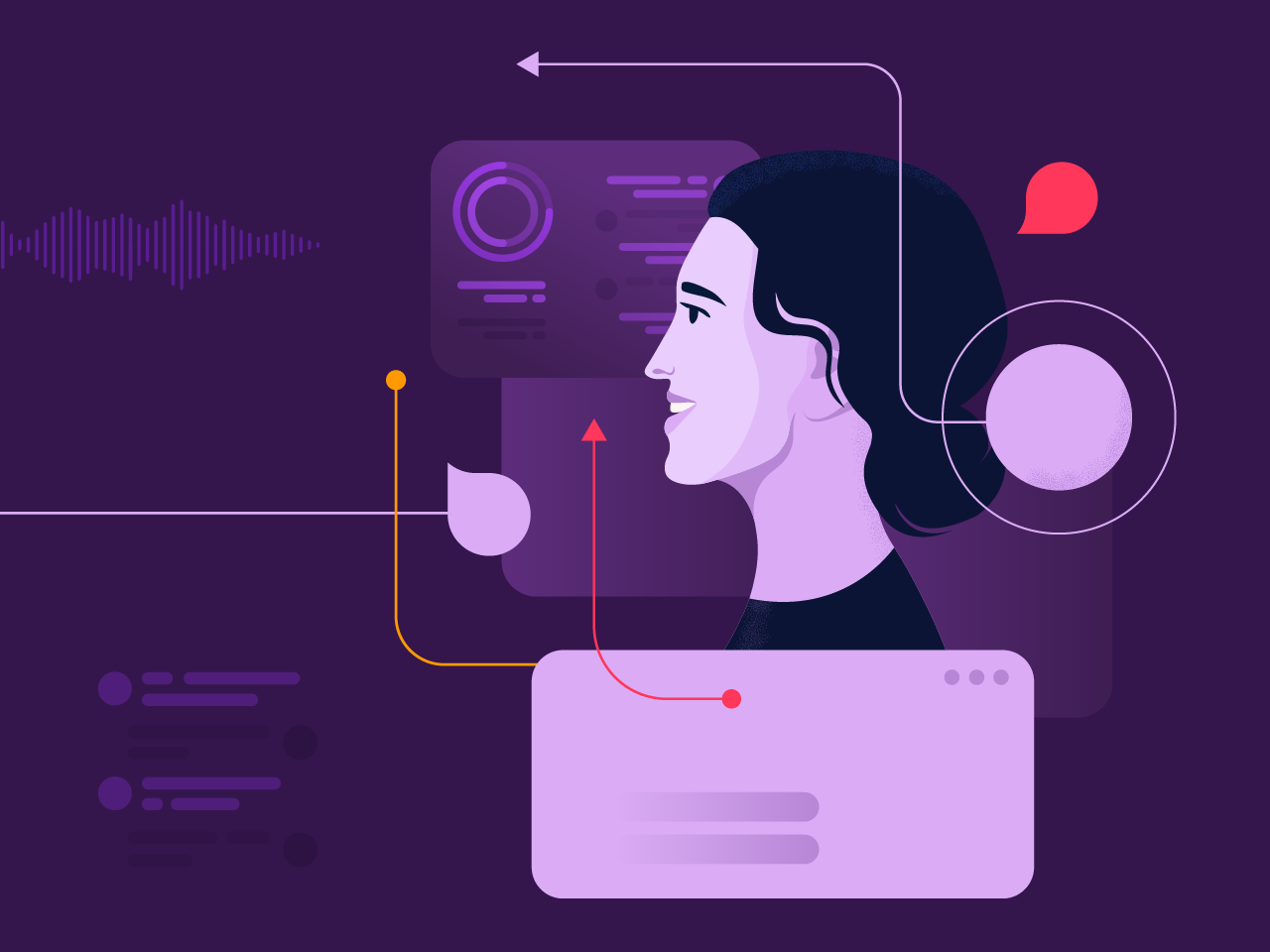If you ask today’s CX leaders what’s keeping them busy, the answers go far beyond metrics or technology. They’re thinking about how to balance AI and human connection, how to keep agents motivated, and how to meet customers who expect more, and faster, every day.
We spoke with leaders from SATS, Vipps MobilePay, Sparebanken Norge, and JFM to hear how they’re approaching these challenges in 2025 and beyond. From new ways of coaching with AI to reshaping roles and building trust-driven cultures, their reflections reveal what really matters in contact centres right now.
Let’s dive into the key topics on CX leaders’ minds - and what they tell us about the future of customer experience.
1. AI adoption: balancing speed and purpose
For Kristian Stormyr, Head of the Customer Centre at Sparebanken Norge, the biggest risk with AI is not just moving too quickly, but also standing still.
“If you’re left standing on the platform as the train departs, you lose out over the long term. But if you move too quickly, you risk overlooking the insight these tools surface.”
His advice is simple: progress with purpose. Experimentation should be paired with reflection and data-driven insight. “Move too slow and you miss the train; move too fast and you risk building the wrong thing,” Kristian said.
He also sees technology pushing customer expectations to new levels. “What counted as a good wait time just a few months ago is no longer good enough,” he noted. “Technology should make things easier for customers, better digital experiences and self-service tools that deliver quick answers.”
2. Empowering agents to lead their own development
At SATS, Nordic Customer Service Leader Carina Dahlqvist Valbøll is rethinking what agent development looks like, and who should own it.
“As much as possible,” she said, when asked how much responsibility advisers should have for their own learning. “We place a lot of responsibility on our people. It leads to higher satisfaction, longer tenure, and they genuinely enjoy coming to work.”
That sense of ownership is supported by AI-powered self-coaching tools. Employees receive automatic feedback based on call recordings, helping them refine their tone, language and approach.
“AI coaching removes the ‘favourite face’ factor.” Carina explained. “It provides consistent feedback for everyone, with dashboards and a bit of gamification to show progress.”
SATS also takes a unique stance on feedback: only positive reinforcement. “We don’t focus on negative criticism. Our aim is to cultivate the positive as much as possible so people feel good,” she added.
By combining AI with a culture of encouragement, SATS has built a model for learning that is both empowering and fair.
3. Turning conversations into data, and insight into action
Across Denmark, Mikkel Banholdt, Commercial Manager at JFM, is using AI to connect every part of the customer dialogue, from service to sales and retention.
“We use Conversational Intelligence alongside Puzzel’s platform to support and optimise our dialogues,” he said.
Conversation summaries now flow automatically into JFM’s CRM, cutting average handling time by over a minute and helping advisers pick up conversations where they left off. Leaders use analytics to coach teams more effectively:
“Instead of listening to 20 calls, you can listen to 3–5 and act the same day,” Mikkel shared.
Agents use AI prompts and dashboards to track daily progress, identify where to improve, and learn from peers. The result? Measurable gains in performance, and more proactive conversations.
“AI can act as a personal assistant or coach,” he added. “It frees employees to focus on value creation, shifting from problem-solving to proactive advising.”
4. Building trust and confidence from the inside out
If rising expectations are one side of the CX challenge, culture is the other. Kristian Stormyr believes continuous learning depends on one essential ingredient: trust.
“That’s essential for developing as a person and within any field, especially customer service. You have to make it easy for people to practise in their day-to-day, and they have to know your intentions are good.”
When employees feel safe to learn, experiment and make mistakes, they are far more likely to grow and deliver the kind of empathetic, confident service customers remember.
Across all the leaders we spoke with, trust came up again and again as the foundation for innovation. It is what allows teams to adopt new tools, take initiative and turn change into progress.
5. Redefining efficiency at scale
For Mike Malmberg, who leads the Central Hub at Vipps MobilePay, efficiency doesn’t mean rushing. It means enabling people to spend time where it matters.
“In the best scenario, AI handles the optimisation so agents can take the time they need with customers,” he said.
At Vipps MobilePay, AI now classifies customer enquiries automatically and assigns a cost per enquiry type, giving product and development teams visibility into the impact of their decisions.
“Product coordinators from Support meet with Development every two weeks to show the cost impact of specific features or releases,” Mike explained. “It makes the expense of product decisions visible and actionable.”
Looking ahead, Mike expects support roles to become more specialised as AI takes over routine tasks. His team is already investing in generative AI to prepare for the customer habits of tomorrow.
“Talking to bots will become normal,” he said. “When the market catches up, we’ll already be there.”
So, what’s really on CX leaders’ minds?
Despite working in different industries, every leader we spoke to shared the same focus: how to combine technology and trust to create better experiences for both customers and employees.
Here is what they are prioritising right now:
- Balance speed with insight. Move fast, but never blindly.
- Empower people. Give advisers ownership of their development, supported by data and coaching.
- Build on trust. Learning thrives in safe and supportive environments.
- Use AI to free up time for what matters. Let technology take care of the routine so humans can focus on value.
- Stay ahead of expectations. Customers will keep raising the bar, and service teams need to be ready.
The future of CX will belong to the teams that find the right rhythm between human empathy and intelligent automation.
This article is based on interviews conducted in October 2025 with CX leaders from SATS, Vipps MobilePay, Sparebanken Norge and JFM.






